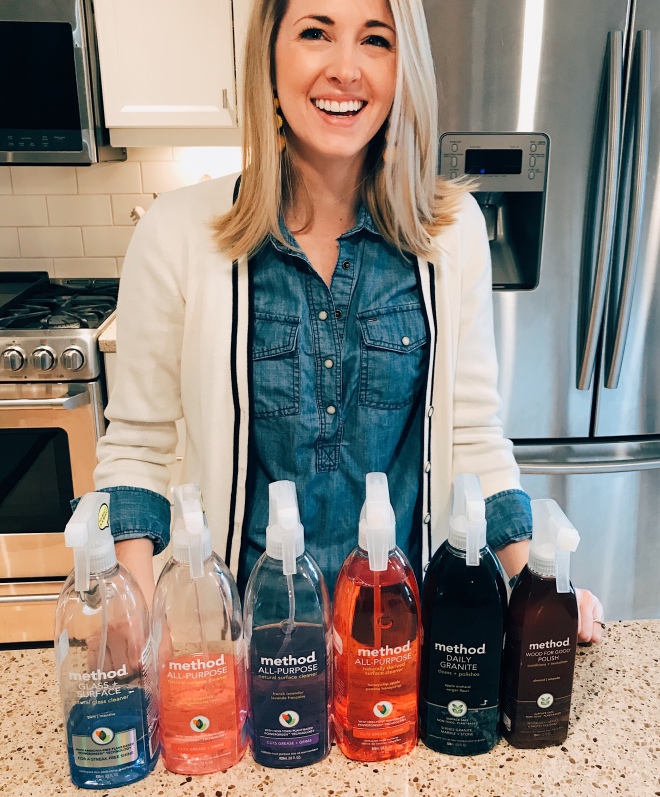If your from Canada, you KNOW how long, cold, and wet this winter has been. This week we welcomed the first day of Spring (FINALLY!), and I could not be more ready! There is something about the warmer air and sunshine that makes me want to get a head start on my spring cleaning. And with Earth Day just around the corner, I find myself taking extra care selecting products for my home that are not only safe for me, but safe for the planet. Today on Sweet and Saving, I’m sharing what to look for on your product label to prevent you from being fooled by “green” marketing language, plus I’ll be adding some germy items in your home to add your cleaning list that you’ve likely never thought to clean before.
Green Certification
Green, all natural, biodegradable, and plant based, are all terms that are frequently used on cleaning products to make consumers think that they are safe for the planet. But don’t be misled by these green logos and claims. Product environmental preferability claims should be validated by credible THIRD party certifications that have been designed to ensure strict standards are followed in the formulation of cleaning and disinfectant products. Did you know that there are both industry and government requirements to be labeled a “green” product? If you want to put your mind at ease, look for these following third party certified green logos.
Green Chemistries
While Green certifications really are your gold standard for selecting environmentally friendly products, these products may be challenging to come across at your local Walmart or Target. Due diligence can be done just by selecting chemistries that are known to be readily or inherently biodegradable and are gentle on the planet, the place we all call home. Look for products with hydrogen peroxide, citric acid, or lactic acid as the active ingredient, which can always be found on a disinfectant’s product label. You will also want to avoid products with ingredients that are harsh on the planet like QUATS (Quaternary ammonium compounds), phosphates, and triclosan.
Green Claims
Remember the relevant green marketing claims that I talked about in Part 2? Look for cleaners and disinfectants that claim to be readily or inherently biodegradable. So what is the difference between readily and inherently biodegradable? Readily biodegradable means a product has been proven to degrade into its natural state when subjected to sunlight, water and microbial activity, from 60-100% in 28 days. Inherently biodegradable means that a product has been proven to degrade into its natural state when subjected to sunlight, water, and microbial activity from 20% to 60% in 28 days. Other GOOD marketing claims to look for are phenol free, VOC free, and phosphate free.
VOCs
What the heck is a VOC? Volatile Organic Compounds, otherwise known as VOCs, are products that have a high vapor pressure at room temperature. In other words, VOCs quickly evaporate into the environment leading to indoor air pollution which can also be toxic to your health. Common VOC culprits in cleaning products are fragrances and alcohol (i.e. glass cleaners). Instead, opt for unscented cleaning products. Personally, I use glass cleaners with alcohol (I find they work the best), but to reduce irritation the best method to apply is by spraying the product onto a cloth and then apply to the surface. This reduces aerosolization which can cause respiratory irritation.
Germy Items in Your Home to Add to your Spring Cleaning List
When it comes to cleaning our homes, I’m sure we all get to the basics on a regular basis (bathroom, kitchen, fridge, etc). But, did you know there are some items in your home that are more germy that the toilet, some places that I bet you’ve never cleaned? These are high touch items, meaning that you touch them on a regular basis providing the perfect breeding ground for germs to travel and spread. Next time you give your house a good clean don’t forget to clean and disinfect you:
- Cell phone
- Telephone
- TV remote
- Light switches (especially during cold and flu season)
- Door knobs/handles
- Computer mouse
Happy spring cleaning!

xo,








